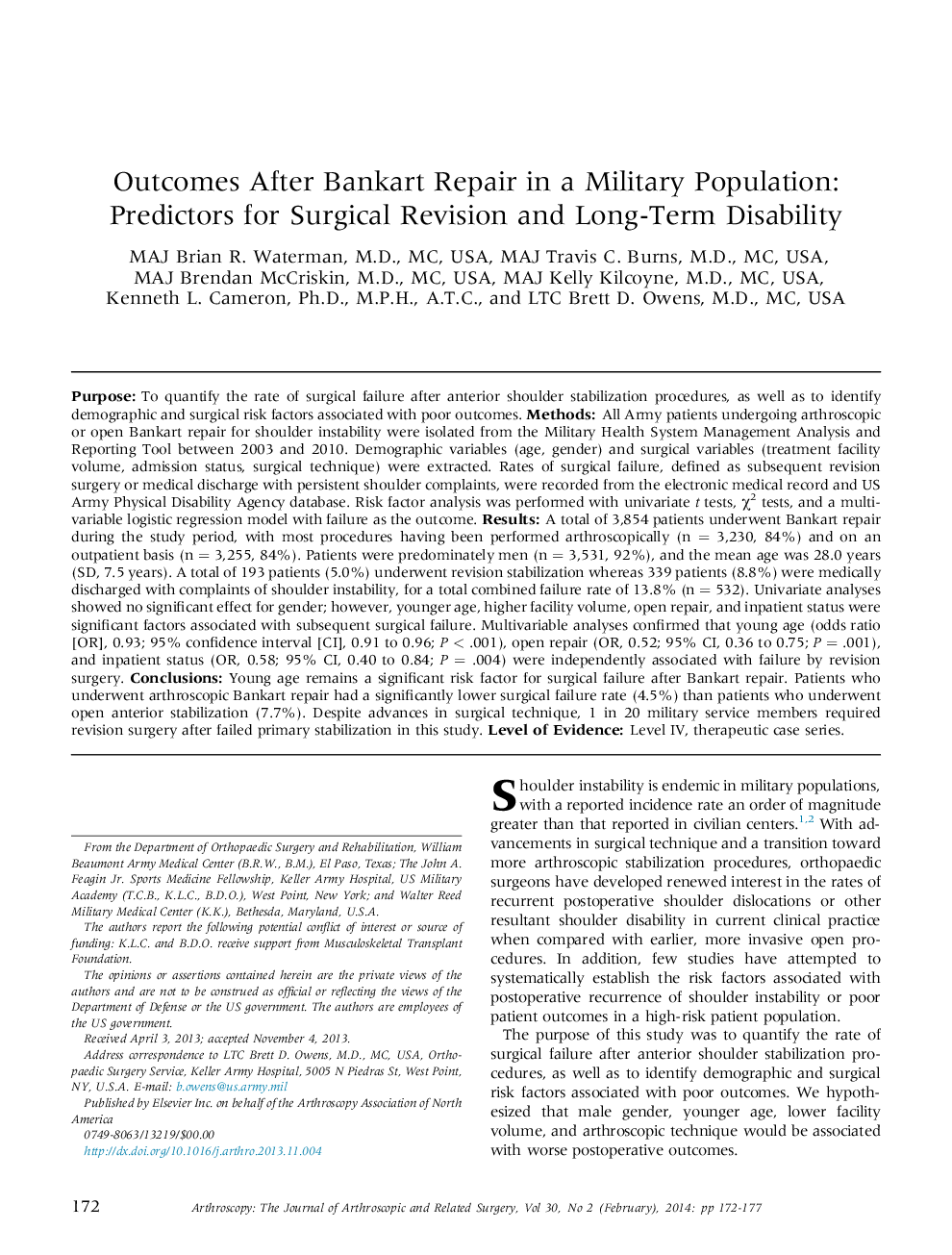| کد مقاله | کد نشریه | سال انتشار | مقاله انگلیسی | نسخه تمام متن |
|---|---|---|---|---|
| 4043077 | 1603500 | 2014 | 6 صفحه PDF | دانلود رایگان |
PurposeTo quantify the rate of surgical failure after anterior shoulder stabilization procedures, as well as to identify demographic and surgical risk factors associated with poor outcomes.MethodsAll Army patients undergoing arthroscopic or open Bankart repair for shoulder instability were isolated from the Military Health System Management Analysis and Reporting Tool between 2003 and 2010. Demographic variables (age, gender) and surgical variables (treatment facility volume, admission status, surgical technique) were extracted. Rates of surgical failure, defined as subsequent revision surgery or medical discharge with persistent shoulder complaints, were recorded from the electronic medical record and US Army Physical Disability Agency database. Risk factor analysis was performed with univariate t tests, χ2 tests, and a multivariable logistic regression model with failure as the outcome.ResultsA total of 3,854 patients underwent Bankart repair during the study period, with most procedures having been performed arthroscopically (n = 3,230, 84%) and on an outpatient basis (n = 3,255, 84%). Patients were predominately men (n = 3,531, 92%), and the mean age was 28.0 years (SD, 7.5 years). A total of 193 patients (5.0%) underwent revision stabilization whereas 339 patients (8.8%) were medically discharged with complaints of shoulder instability, for a total combined failure rate of 13.8% (n = 532). Univariate analyses showed no significant effect for gender; however, younger age, higher facility volume, open repair, and inpatient status were significant factors associated with subsequent surgical failure. Multivariable analyses confirmed that young age (odds ratio [OR], 0.93; 95% confidence interval [CI], 0.91 to 0.96; P < .001), open repair (OR, 0.52; 95% CI, 0.36 to 0.75; P = .001), and inpatient status (OR, 0.58; 95% CI, 0.40 to 0.84; P = .004) were independently associated with failure by revision surgery.ConclusionsYoung age remains a significant risk factor for surgical failure after Bankart repair. Patients who underwent arthroscopic Bankart repair had a significantly lower surgical failure rate (4.5%) than patients who underwent open anterior stabilization (7.7%). Despite advances in surgical technique, 1 in 20 military service members required revision surgery after failed primary stabilization in this study.Level of EvidenceLevel IV, therapeutic case series.
Journal: Arthroscopy: The Journal of Arthroscopic & Related Surgery - Volume 30, Issue 2, February 2014, Pages 172–177
